High on my to-see list for Mexico City was visiting the Frida Kahlo Museum, otherwise known as Casa Azul. So after a very few hours of sleep following my late-night arrival in town, I took a taxi there.
The museum is located in the residential neighborhood of Coyoacán in the house where Kahlo and Diego Rivera lived. It’s not very large and at 10:00 on a Saturday morning there were already close to 400 people in line to get in. Fortunately, I had purchased tickets in advance and was able to get in after waiting only about twenty minutes.
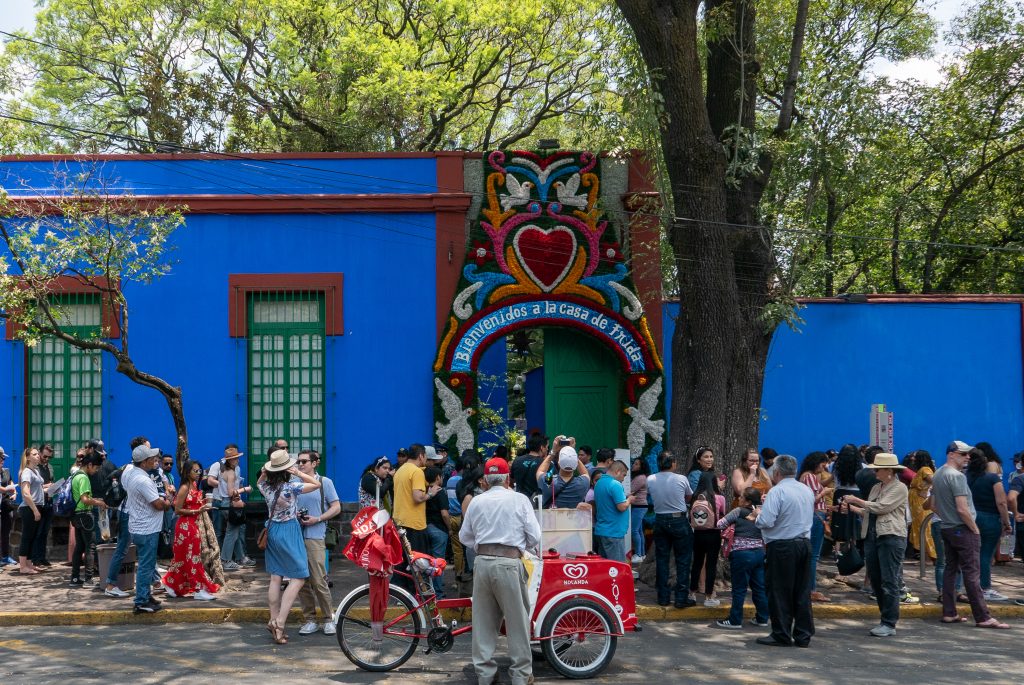
Although the museum includes some of Kahlo’s paintings and drawings, it was more a museum of her life than a display of her life’s work. In almost every room there were reminders of both the physical suffering and disabilities she endured as well as the joy she took in life itself.
Though I knew she was badly injured in a bus accident when she was a teenager, I was unaware that she contracted polio when she was just six years old. Seeing her wheelchair in her bright, airy studio reminded me of my own childhood.
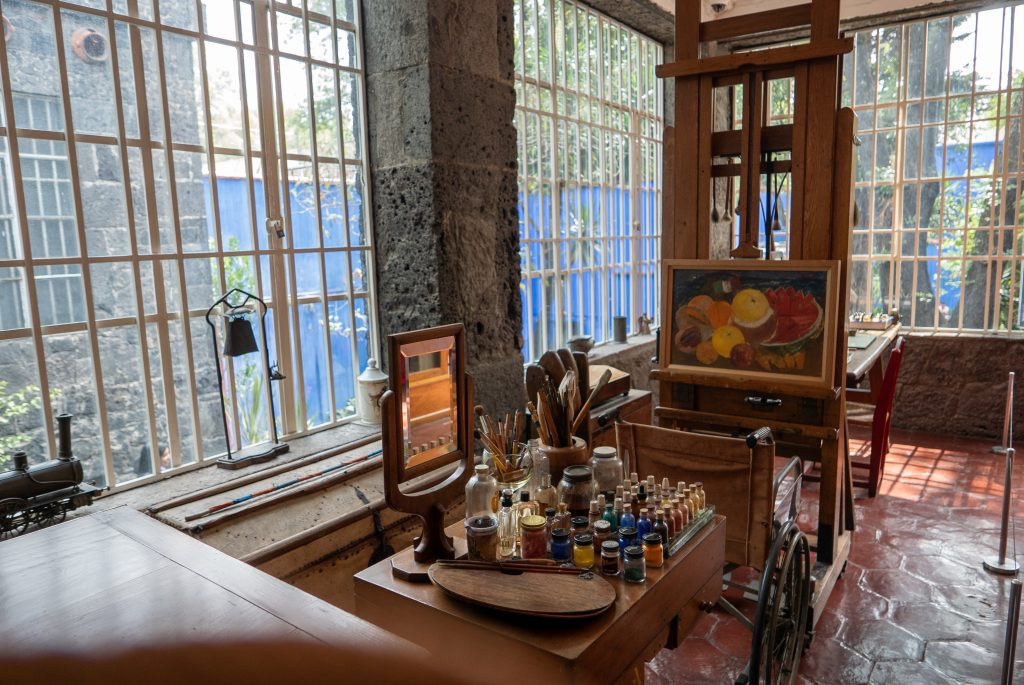
My father had polio. He walked unassisted with a heavy limp, then used a cane and eventually a wheelchair. I could well imagine what Kahlo’s home life might have been like.
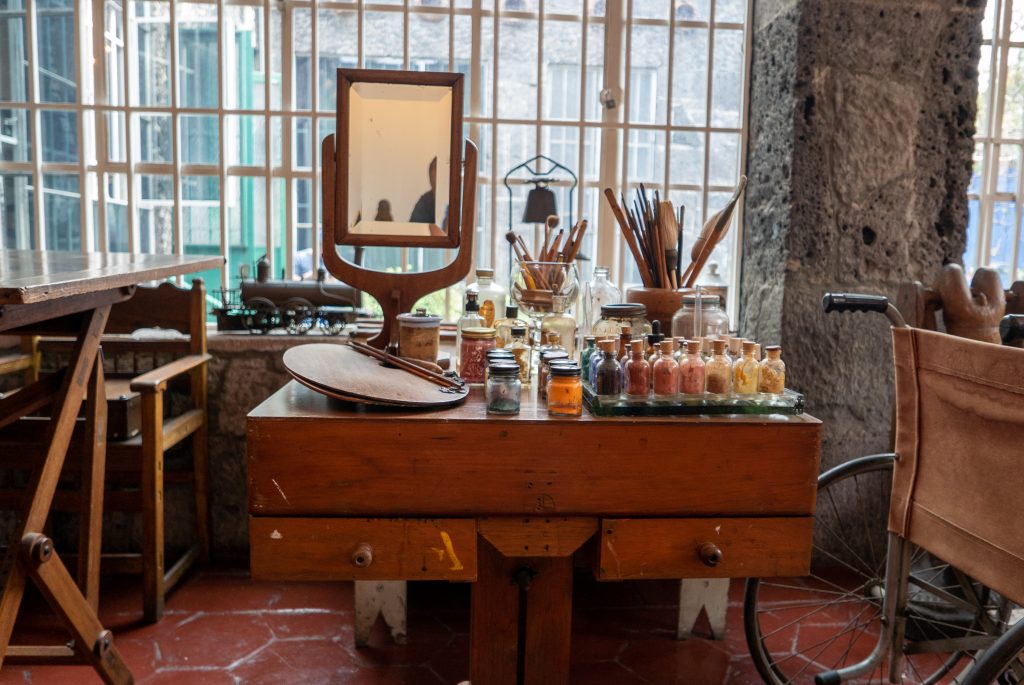

There were other reminders of Kahlo’s lifelong suffering scattered through the house, including this painting she did of herself at the Henry Ford Hospital in Detroit, Michigan following a miscarriage.
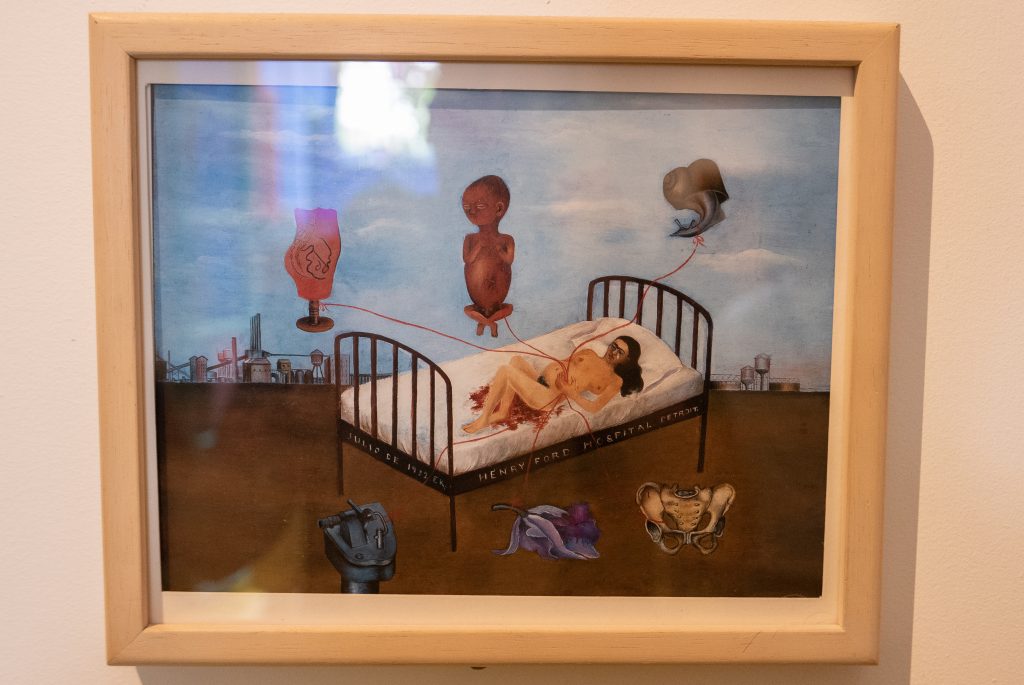
Even her paintings that weren’t obviously medical explored the hidden interstices within the body.
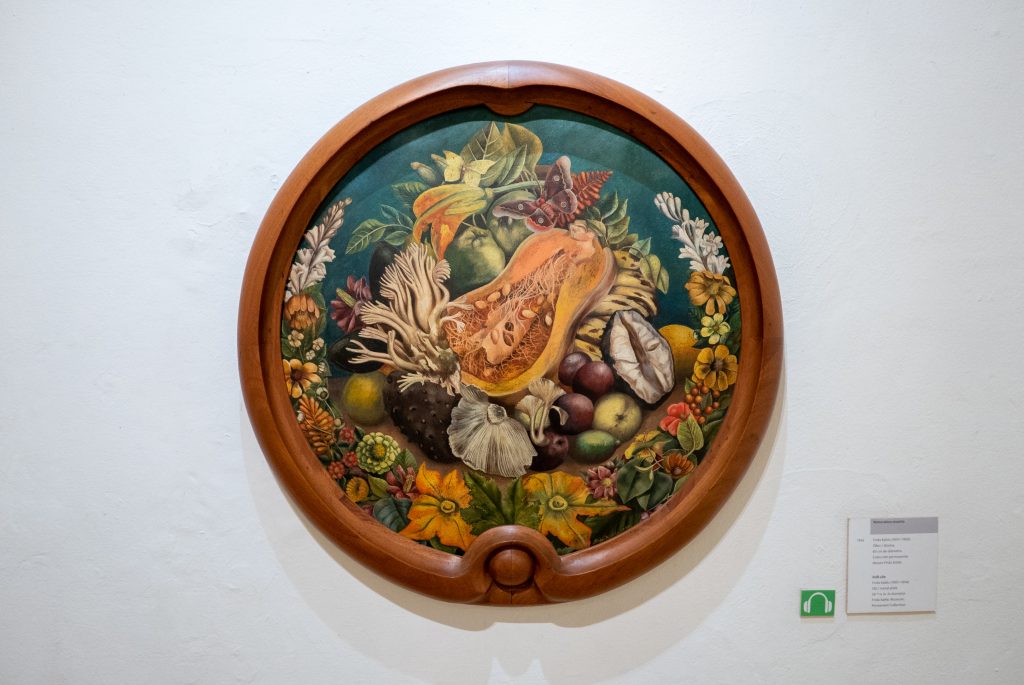
But Kahlo seems to have embraced love and joy as fervently as she embraced her pain. This is probably one of the factors in her popularity.
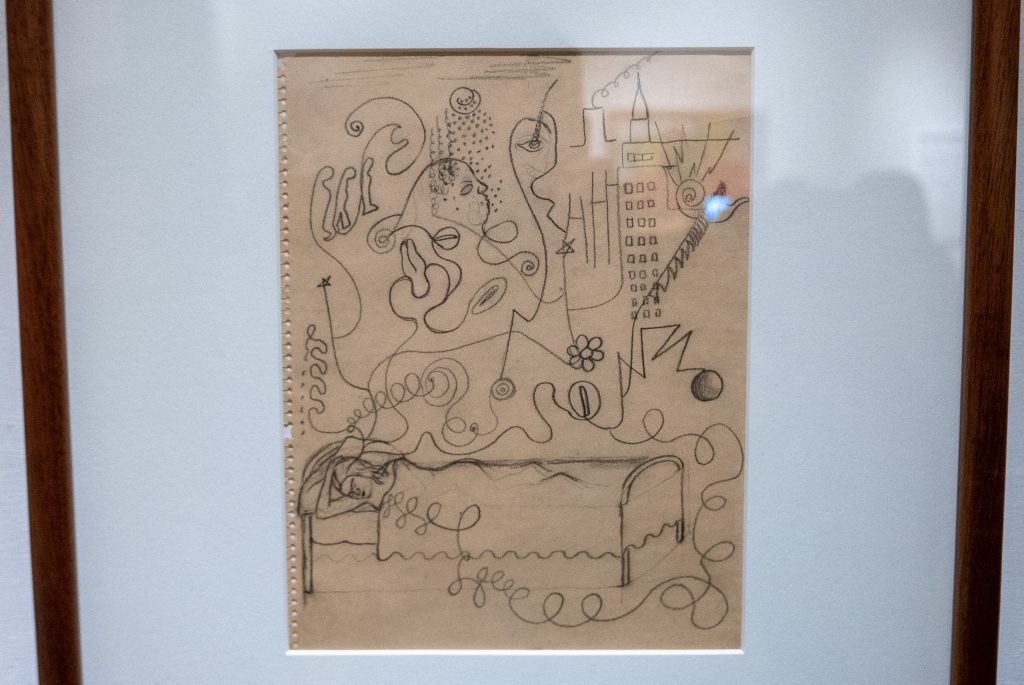
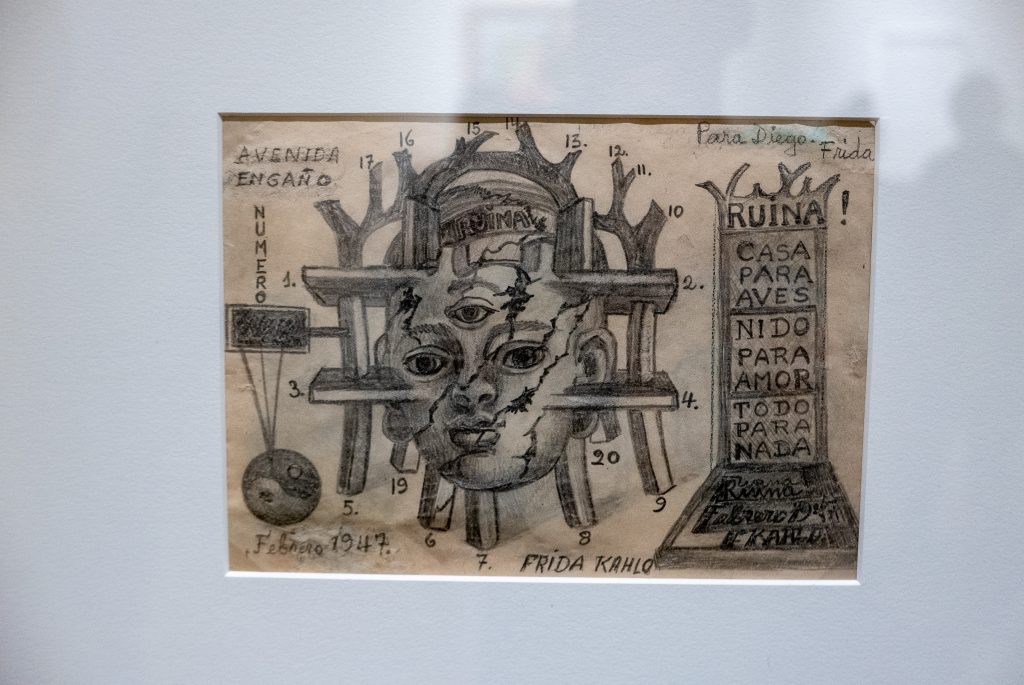
You can find Frida Kahlo’s image and images on all manner of merch all over the world today. A year ago I went to a crafts fair in San Juan where there was a vendor who ONLY sold such stuff; I bought a couple of pillowcases from her. Frida is a money-making industry. So it’s quite ironic that in her lifetime she was a through-and-through communist and had photos of Marx, Lenin, Mao, and Stalin hanging in her bedroom. She was not at all reticent in her politics.
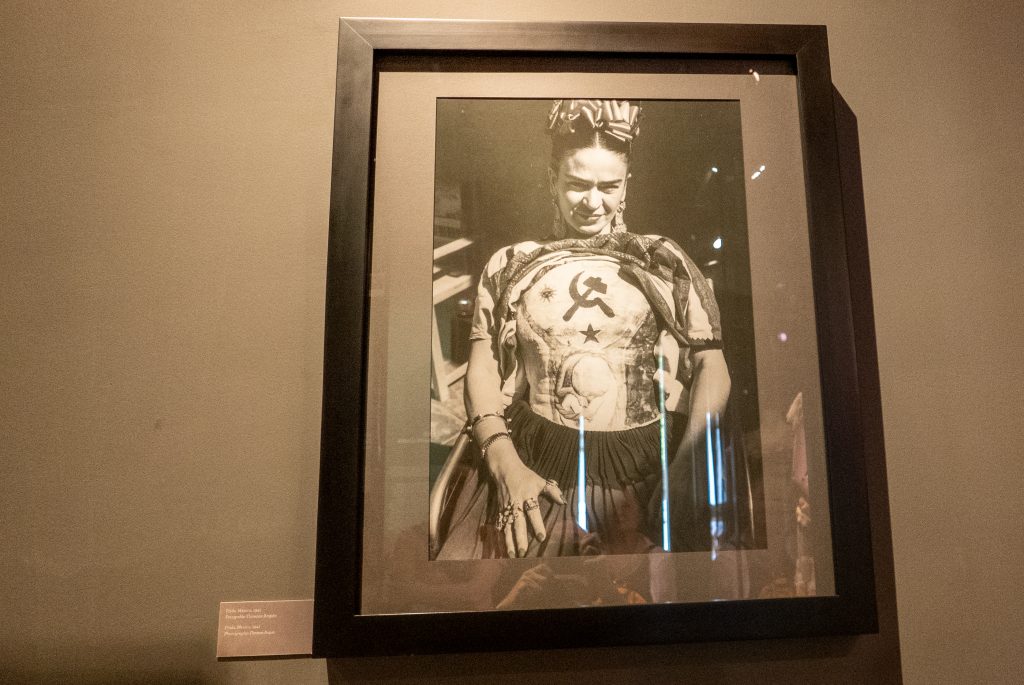
She was a near-neighbor of Leon Trotsky, who lived about three blocks away. This photo of them together was hanging in her house.

There was one didactic painting she did that tied her chronic health problems to the hope that the prospect of a communist revolution inspired. “Marxism Will Give Health to the Sick,” it said. So the personal and political combined within her.
Other photos of her show the more playful, sensual side of her personality.
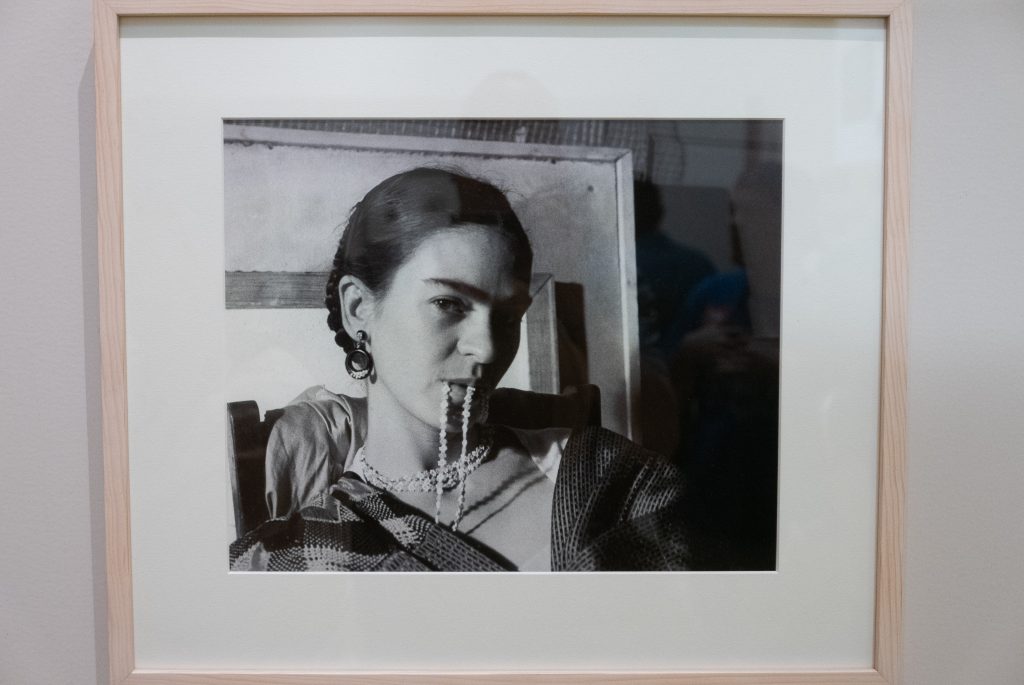
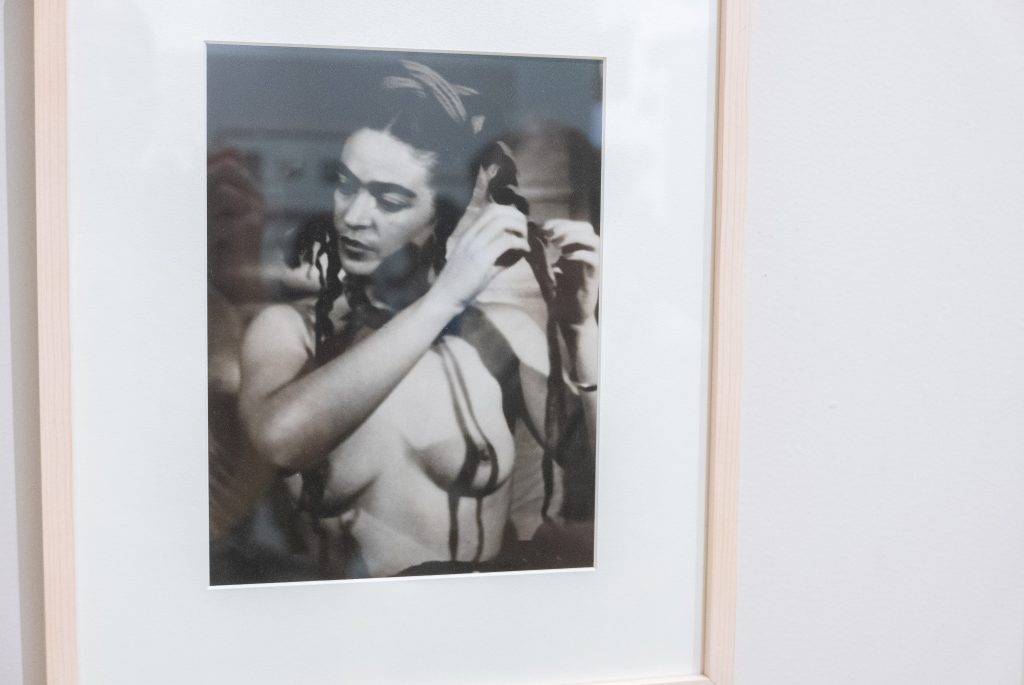
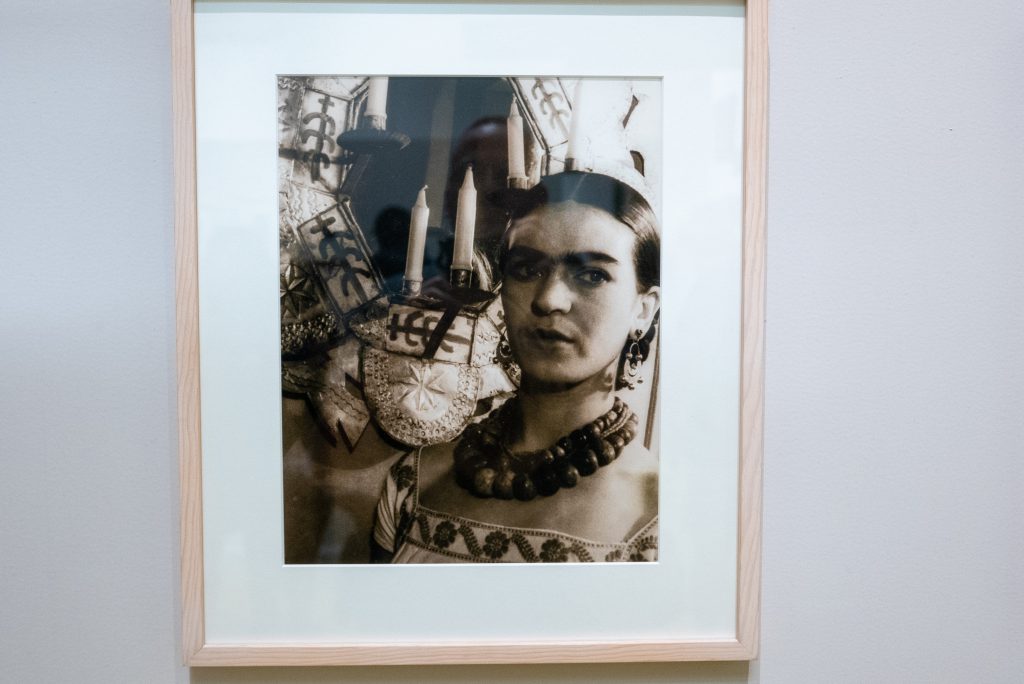
The courtyard of Casa Azul is a beautiful space, full of trees, plants, and ponds. There was a sweet photo of Diego Rivera sleeping on one of the stone benches there. I declined the opportunity to do that myself and instead opted for this memory photo.
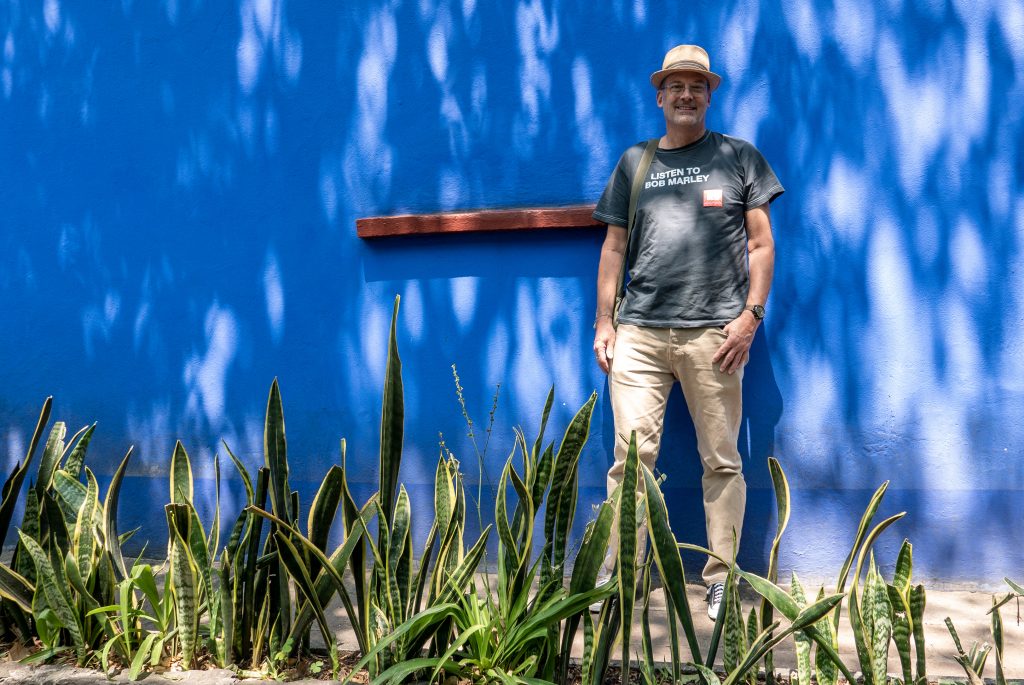
I have seen exhibitions of Frida Kahlo’s work, most notably the Detroit Institute for the Arts’ 2015 exhibition entitled “Diego Rivera and Frida Kahlo in Detroit.” I have pored over books of her art. I have imbibed her image as a pop culture icon. Seeing her home, though, gave me a more complete understanding of the woman herself. It was the high point of my visit to Mexico City.

































